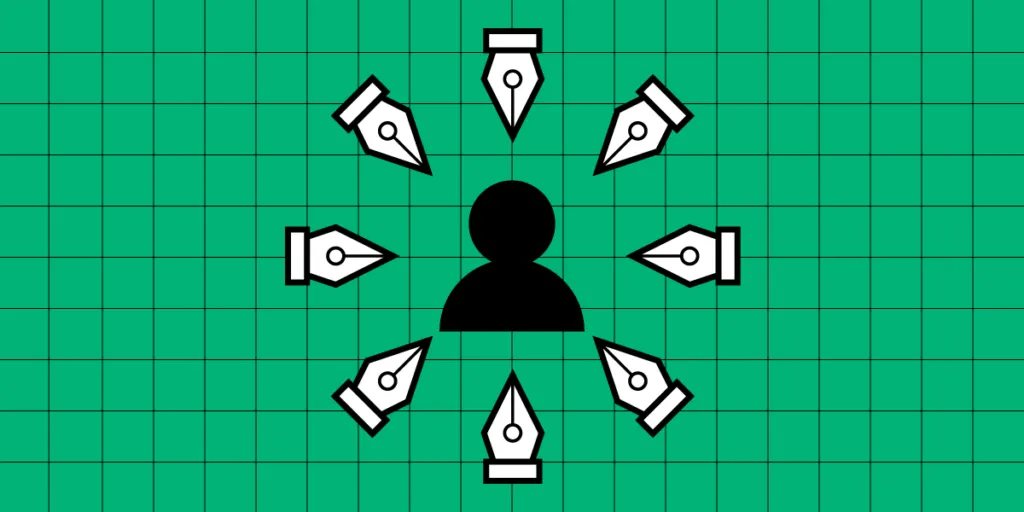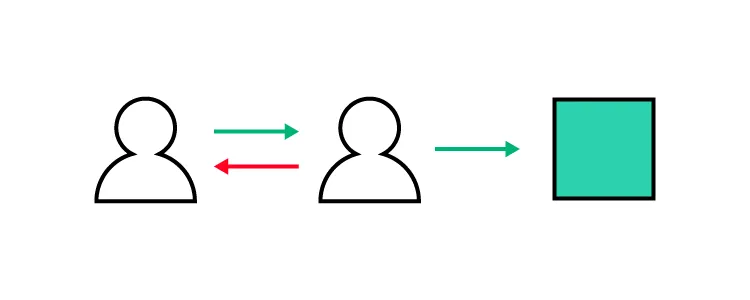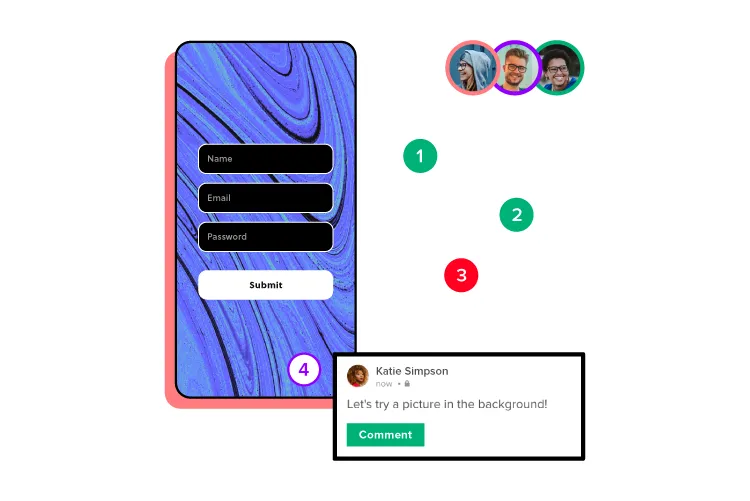What is Design Advocacy?

Design advocacy has grown in popularity over the last decade as UX designers seek to educate non-design teams and stakeholders about the importance of user-centered solutions and user experience.
Design advocates take on many forms, from UX designers to c-suite executives with firsthand experience. The goal of a design advocate is to create ripples throughout the organization to transform thinking towards user-centered values.
Table of contents
Enhance your product’s user experience with code-based design from UXPin. Create high-fidelity prototypes that accurately replicate the final product, resulting in meaningful feedback from usability testing and stakeholders. Sign up for a free trial to discover how UXPin can revolutionize your UX design process.
What is a UX Design Advocate?
A design advocate is a UX practitioner dedicated to educating and collaborating with non-design teams and stakeholders about user experience while promoting design interests, user-centered design ideas, and design thinking.
Design advocacy is typically an inward-facing role where advocates work with design teams, stakeholders, and other departments on design-related matters.
- With design teams, avocates work primarily to instill the org’s design values and build company culture.
- With stakeholders and non-designers, they’re showcasing design’s value and looking for collaboration opportunities.
In some instances, design advocates will also connect externally with end-users through online forums or live events. Whether an advocate works internally or externally depends on the product and organization.
What is the Difference Between Advocacy and Persuasion?
Advocacy is about standing up for design interests and having a seat at the table, whereas persuasion tries to convince people to think or act like you.
Design advocacy is not about forcing people to adopt design practice; it’s about including design thinking and principles in their work. The goal is to get non-design team members and stakeholders to stop and think, “Does this decision serve our interests and our customers?”
Why is UX Design Advocacy Important?
Many stakeholders and non-design teams lack user experience understanding, believing that UX is only about making things look aesthetically pleasing. While this might seem trivial, it can have adverse implications for design projects, resulting in a perceived “design failure.”
For example, let’s say you’re building an app where stakeholders instruct designers to prioritize content and CTAs for business interests. But, user research and testing show that customers prioritize different content and features.

Users become frustrated with the product because it’s not intuitive, or they have to navigate to menus and submenus to find what they need–resulting in simple tasks taking longer than they should. Several things might happen as a result:
- Customers stop using the product, switching to a competitor
- Customer service tickets increase
- Conversions and sales decrease
- Negative reviews damage the brand’s reputation
These issues have adverse consequences for the organization, and stakeholders blame UX. The real problem was prioritizing business goals and assumptions over user research and user-centered design.
Stakeholders aren’t necessarily at fault; they simply lack a foundational understanding of user experience–this is where design advocates come in.
What is an Example of Design Advocacy?
We’re going to share two examples of design advocacy at two enterprise organizations–one at PayPal and the other at GM.
Advocating for User Experience at PayPal
In her Design Value Conference 2020 talk, Erica Rider, UX Lead EPX at PayPal, talks about how she advocates UX principles to product and engineering teams to hold everyone accountable for user experience–not just UX.
Erica realized a significant control/accountability imbalance in the product development process:
- UX designers have zero control over UX delivered to users but 100% accountability.
- Engineers have zero accountability for UX delivered to users but 100% control.
Erica believes the accountability should be balanced or fall on the delivery team. She works to educate engineers to understand user experience and measures their success through a purpose-built wizard.
By advocating for design and user experience principles, Erica has found a middle ground with her engineering counterparts to improve product delivery for her users.
You can learn more about Erica’s approach from her 30-minute Design Value Conference talk, DesignOps 2.0 – Scaling Design.
Proof That Design Advocacy is Effective – A GM Case Study
Talking at Miro Distributed 2020, Jerra Murphy, UX Researcher & Design Strategist at General Motors, discusses her strategies for advocating design and user experience at the motor industry giant.
Jerra uses design thinking workshops and shared experiences to educate stakeholders about users and their frustrations. Her biggest success was with GM’s Director of Global Innovation, Tanya Skilton, who realized her approach to products was flawed.
“Early on, I made the mistake of assuming that business-focused, high-level discussions about problems and products to solve them was adequate information with which to design and create products! How very wrong I was!
Working with you [Jerra] to create UX-focused research showed me how questions can be asked to genuinely learn about a problem or need versus simply reinforcing my pre-conceived notions about that user or problem.”
Firstly, hats off to Tanya for being open to new ideas and to Jerra for doing such a great job shaping the thinking towards design at GM. You can watch Jerra’s entire 30-minute talk here.
This example from GM reinforces our earlier statement, “Stakeholders aren’t necessarily at fault; they simply lack a foundational understanding of user experience.”
What is the Best Way to Advocate for Design?
Here are some ways to advocate for design across the organization, from partnerships to including stakeholders in design activities and even implementing new design practices.

1. Cross-Functional Collaboration
Collaboration is one of the keys to successful design advocacy. Design advocates must find ways to work with departments to share information and the value of user research.
Here are some examples of how design team can collaborate with others to offer value in other parts of the organization:
- There is a lot of value in sharing information with sales and marketing teams. Both teams look at user behavior but through a different lens. Sales and marketing often have valuable data designers can use to support research, and UX can provide existing user research to optimize campaigns.
- User research can help business teams identify opportunities for new users or markets. Design advocates can offer to share this valuable information to improve product-market fit–increasing UX’s influence in business decisions that serve users and the organization.
- Data scientists have valuable insights into user behavior, the problems UX can solve, and how to prioritize accordingly. UX advocates can share user research data as another data point for analysts to develop a clearer picture and understanding of customer behavior.
Finding these collaborative opportunities is an integral part of being a design advocate and increasing the department’s value within the organization.
2. Workshops
Design thinking workshops are fantastic for educating non-design teams and stakeholders about design processes and how design thinking solves problems. Design workshops were one of the ways Jerra Murphy worked her magic at GM–and look at the results!
3. Invites to User Interviews
User interviews allow stakeholders to view the usability testing process and how UX designers develop solutions to user problems and identify opportunities.
User interviews are also an excellent opportunity for stakeholders to watch how users struggle with usability issues or poorly designed UIs, creating empathy for future decision-making.
4. Invites to Design Sprints
Design sprints allow stakeholders and non-design team members to experience the end-to-end design process firsthand in under a week. They’ll get a crash course into design thinking and processes and see user reactions to their solutions.
5. Storytelling
Jerra Murphy of GM often uses storytelling to tell user stories and UX successes. Over time, Jerra has found that sharing UX artifacts aren’t the best method for presenting these stories to stakeholders. They make sense to designers but aren’t visual enough for stakeholders.
Jerra looks for ways to tell UX stories that are relevant to the listener, usually with lots of visuals connecting the dots between the user and business goals, for example.
When telling a user or UX story, think about your audience and use appropriate language and visuals to get your message across.
6. Advocacy Through DesignOps
DesignOps is a popular vehicle to drive design advocacy. DesignOps practitioners create efficiencies within design and measure the impact in other parts of the organization.
They work on several initiatives to increase design’s value (some of these draw parallels with a design advocate’s job), including:
- Encouraging and facilitating cross-functional
- Cross-functional information sharing
- Skills development
- Instilling design principles and building team culture
- Career development and coaching
- Design team goal setting and mentoring
- Developing tools and processes for better cohesion and consistency
Learn more on the topic by reading our ebook titled DesignOps 101: Guide to Design Operations.
UXPin – The Ultimate Design Advocate for Your Users
User testing is a crucial part of the design process. But, if your prototypes can’t replicate the product experience, you won’t get accurate results. With UXPin’s code-based design tool, designers can build prototypes with code-like fidelity and functionality for better user testing.

UXPin prototypes also result in better, more meaningful feedback from stakeholders. Instead of “imagining” doing something, UXPin’s code-based prototypes offer advanced functionality, creating immersive experiences your stakeholders love.
Switch to UXPin’s code-based design solution and start creating more value and efficiencies for design advocates to talk about. Sign up for a free trial to experience how UXPin can create better user experiences for your customers.

